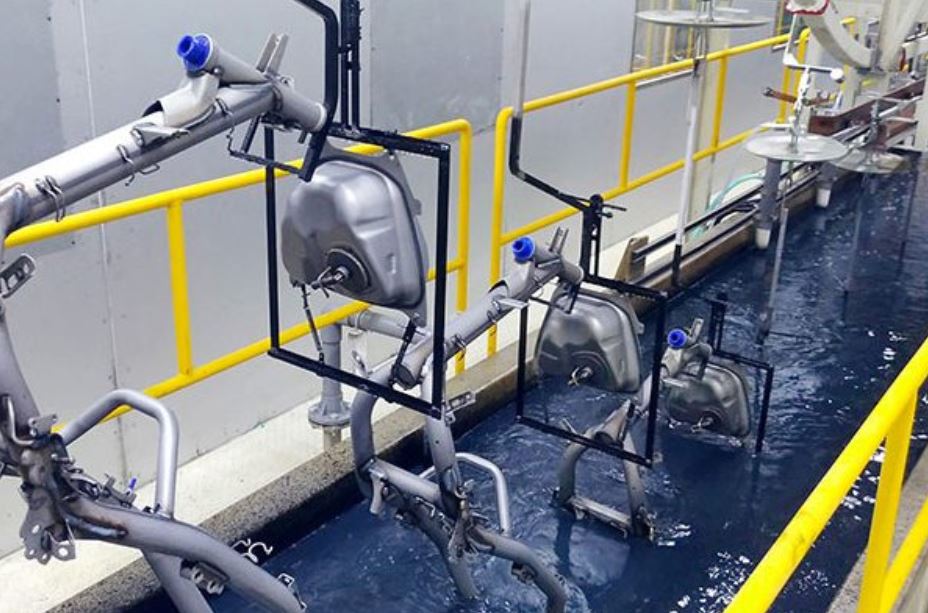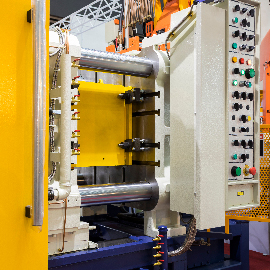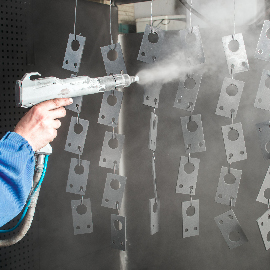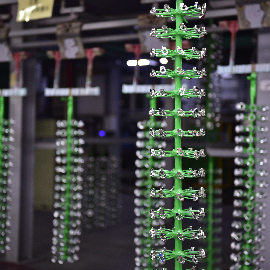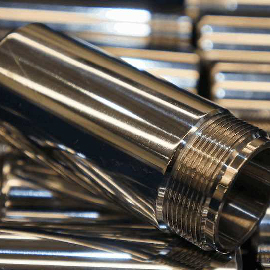6 Things You May Concern On
E-Coating Aluminum
E-Coating (Electrostatic Coating) is a surface finishing technique that utilizes charged paint particles for coating metal parts. The paint electrostatically adheres to the surface through electrophoresis and results in a uniform thin film of paint. E-coating Aluminum is one of the popular surface finishings for aluminum parts.
It has been a widely adopted surface treatment method for aluminum parts due to its increased efficiency and economy. This guide will highlight the important aspects of e-coating to help you choose the right e-coating solution for your die cast or machined aluminum parts.
Sunrise Metal is a leading aluminum die casting and CNC machining manufacturer. We have multitudes of surface treatment facilities including e-coating. Need a supplier that can provide you with a one-stop solution for design, manufacturing, and finishing? Sunrise Metal wants to help.
1. E-Coating Aluminum Process
E-coating is known by various other names in the industry such as electrocoating, electrophoretic deposition, electrophoretic painting, electrodeposition, etc. Regardless of the differences in names, they all refer to the same process.
The coating process takes place
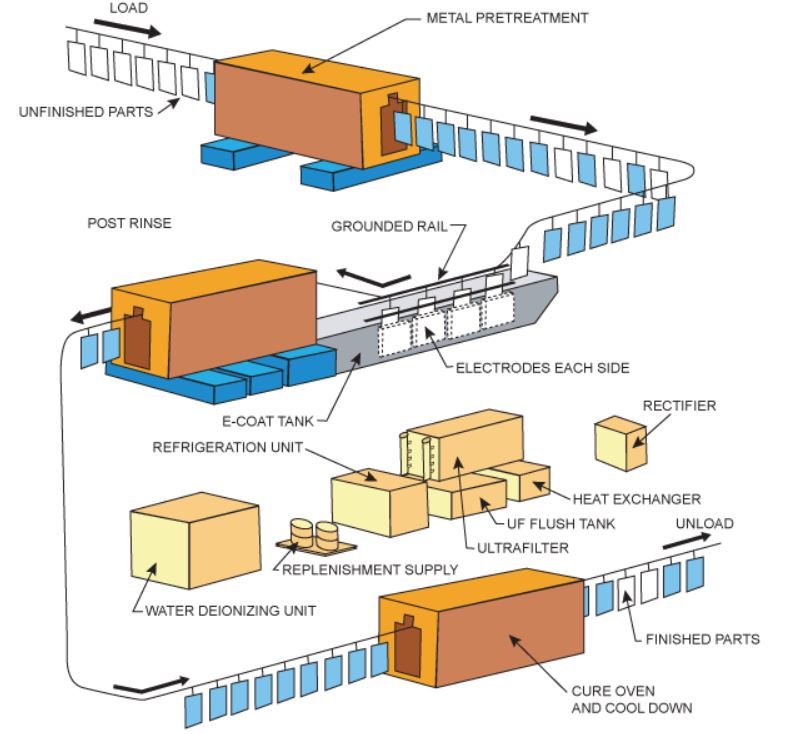
in multiple steps. The entire process of e-coating aluminum parts may be divided into the following steps.
Loading Parts
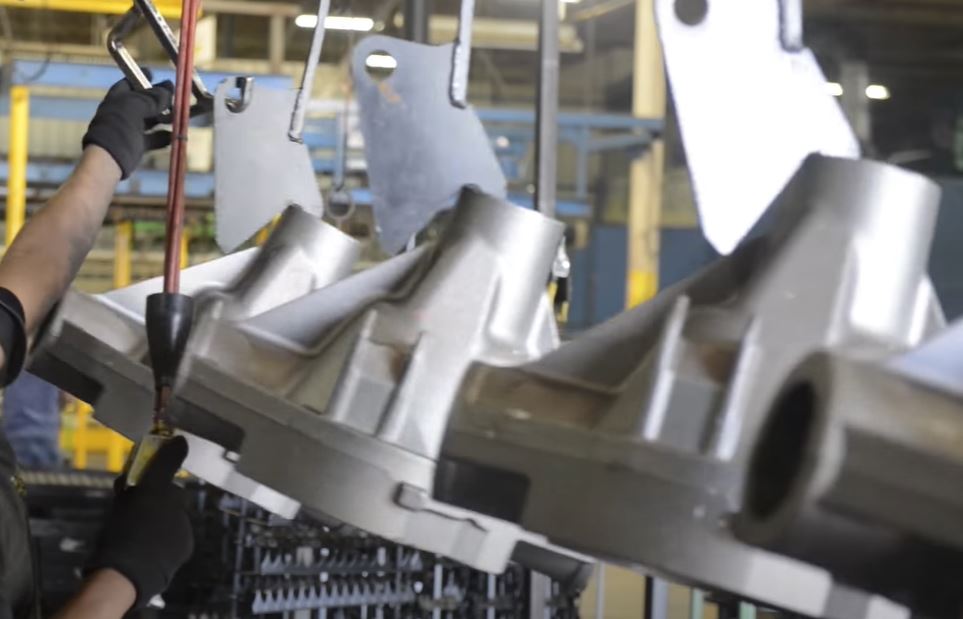
The treatment facility is equipped with a good number of immersion tanks. Usually, the manufacturers move the parts from one tank to another using conveyor belts. A human operator sorts the aluminum parts onto the e-coating line.
The parts must be hanged into the coating line in a manner so that it will not entrap any air when dipped into a tank. From there, the parts are carried into the pretreatment facility.
Pretreatment
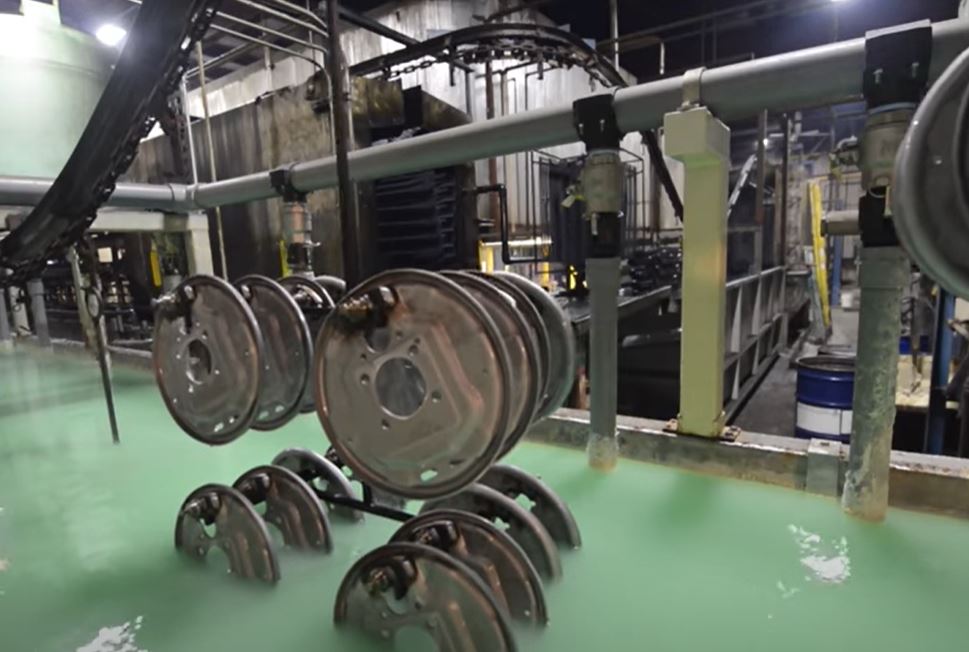
In order to e coat paint an aluminum part, you must ensure that there are no impurities present in
the parts. Impurities can severely damage the surface of parts. It will also compromise the consistency and performance of the applied coating.
So, aluminum parts are thoroughly cleaned in a pretreatment facility first. A typical pretreatment facility consists of multiple chambers/tanks for rinsing the parts with demineralized water and other cleansing acid/chemicals.
Deposition
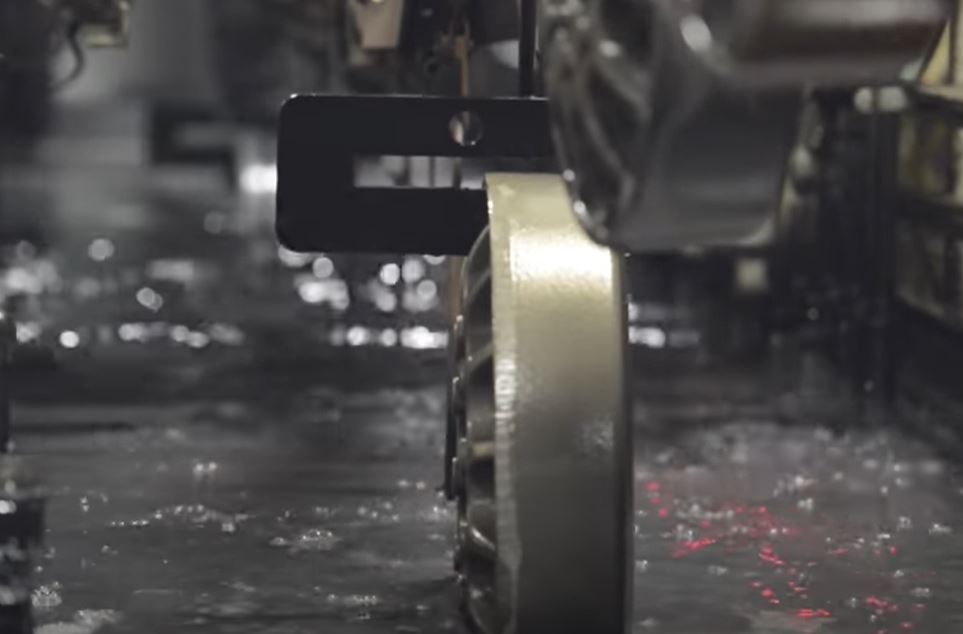
Once pretreatment is done, the conveyor belt carries the parts into a paint tank for deposition. Conveyor belts may not be suitable when dealing with large parts like automotive chassis. In such cases, another mechanism is used for handling the parts.
The paint pigment remains suspended in the liquid and electrostatically charged through an electric current of high voltage. The aluminum parts act like an electrode here and attract the charged paint particles.
The charged paint particles adhere to the part’s surface and form a thin film. The thickness of the coating can be regulated by modifying the voltage of the current. Higher Voltage will result in a thicker coating.
Rinsing
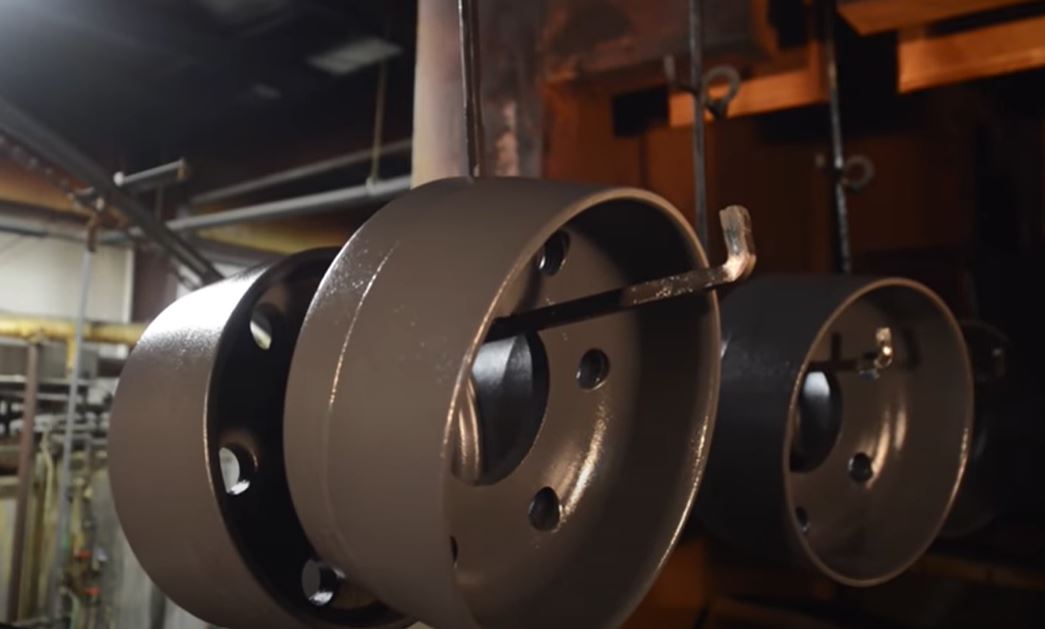
The dipped parts need to be rinsed again to remove the excess paint. They are carried into the cleaning chambers again, and thoroughly rinsed with water and chemical solutions. Once done, they are sent to the oven.
Curing
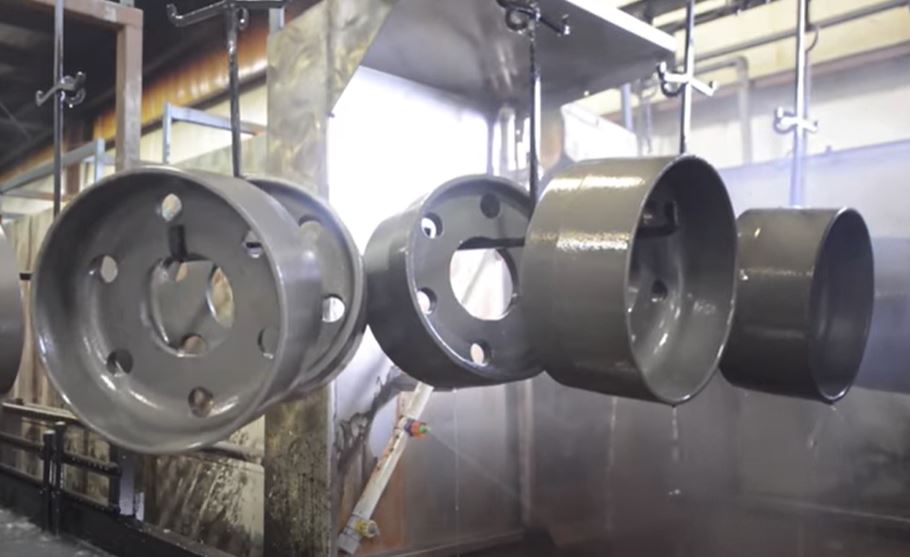
E coat paint needs to be cured in an oven for cross-linking the paint particles. This allows the paint to perfect its chemical composition and improve its properties. Curing substantially improves the adhesion of paint to the part’s surface and the paint won’t come off without aggressive means of removal.
Unloading Parts
After Curing is done the parts are allowed to cool down for a while and then they are unloaded from the e-coating line. Then a new batch of parts is loaded onto the e-coating line.
These processes can be performed manually as well. But when dealing with a large volume of parts, automation can substantially increase the efficiency of the process. Here’s a video that explains the e coating process in brief.
2. E-Coating Classifications
E-coating may be classified into the following categories based on the polarity used for coating.
- Anodic E-coating
- Cathodic E-coating
Anodic E-coating
In this case, the metal part is used as the anode. It is not a preferable e-coating technique and rarely used. Because it causes some metal ions to mix with the coating. This hampers the durability and corrosion resistance of the parts. However, anodic e-coating can be cured at lower temperatures.
Cathodic E-coating
The aluminum parts are negatively charged in case of the cathodic e-coating process. The part act as the cathode and attracts the negatively charged paint particles. This is the most common scenario for e-coating. It is more efficient and provides better results.
Cathodic e-coating can be done with different types of the coating material. Two such processes are,
- Cathodic Acrylic E-coating
- Cathodic Epoxy E-coating
Acrylic coatings provide good protection against UV rays and corrosion. It offers a wide range of colors, but the colors are a bit light.
Epoxy coatings provide superior protection against corrosion. But, they don’t provide good protection against UV light. So, they are mostly used as a primer in automobile parts and requires an additional coating over it.
3. E-Coating Aluminum Benefits
E-coating is a popular surface finishing technique for aluminum parts. Its convenience and effectiveness are what make it a preferable option to others. Below we have highlighted the major benefits of e-coating aluminum.
Outstanding Durability
E coat paint is extremely durable. The paint adheres to the aluminum surface very well and will not come off under normal conditions. So, it will keep parts protected for an extended period thus eliminate the hassle of maintenance for end-users.
Excellent Protection
E-coating provides high resistance against corrosion for aluminum. So, the coating can withstand highly corrosive and harsh environmental conditions. It also increases the wear resistance of your aluminum parts.
Uniform Film Thickness
E-coating is very efficient and consistent. It offers a uniform film thickness all-around your aluminum parts. You can control the coating thickness by altering the voltage of the current supplied into the tank. So, you can choose a thickness according to your requirements.
Economical
E-coating is very economical compared to other similar coating techniques. It provides premium quality which would be significantly costlier to achieve using other methods. In fact, e-coating has substantially reduced the demand for many finishing methods that were once widely used in the industry.
Versatile
You can e coat almost any metal parts including aluminum. Part’s complexity is not an issue with e coating. Since the entire part is dipped into the tank, the paint can reach all recesses of the parts. And you can coat very large parts as well using larger immersion tanks.
Environment Friendly
E-coating can utilize water-based solutions as the coating medium. There is little to no volatile organic compound present in the paint solution. So, unlike most other liquid coating processes, it doesn’t have a negative impact on the environment.
4. Application
E-coating has many applications in the manufacturing industry. Some of the common application of e-coating aluminum is discussed below.
E-coating is extensively used in the automotive industry for coating automobile chassis and components. They are more or less a standard as primers for metal or aluminum components. Their superior adhesive properties allow you to apply an additional layer of coating with ease.
E-coating can also serve as a top-coat for your aluminum parts. They are desirable for their resistance to corrosion and wear. So, aluminum housing and frame components can benefit from e-coating. The performance and durability will be better than most liquid coatings.
5. Limitations
E-coating is economical, efficient, and durable. It is a nearly perfect process that is excellent for coating your aluminum parts. But there are certain situations when e-coating may not be the best solution for you. Let’s have a look at some of the limitations of the e-coating process.
Limited Color Choice
E-coating is not actually limited to colors. It is possible to achieve a wide range of colors with e-coating. The paint solution can be consisting of different varieties of color pigments. However, it is not as simple as it sounds.
One immersion tank is usually used only for one type of color. If you want to e-coat of different colors then the entire paint tank needs to be refilled. This will take a considerable amount of time and cause a waste of material. So, you will find that the suppliers will offer you a limited number of colors for e coat paints.
Poor UV Ray Protection
Some e-coating materials such as epoxy has poor UV ray protection. This makes them prone to fail in outdoor conditions. However, this can be fixed by providing an extra layer of coating. Normally epoxy coated parts are powder coated afterward to improve their durability and performance.
Inconsistency in Color
It is difficult to control the color of e-coated parts in a batch. Because the outlook of the color can vary depending on the curing process. Parts with more oven time can look different from the ones with less oven time.
Defects During Coating
When you wish to e-coat your aluminum parts, they must not contain any form of impurities. Having even the slightest bit of impurity can cause severe e coat defects and compromise the part’s durability and performance. So, all parts need to be thoroughly inspected and cleaned.
Blind spots and sealed corners can entrap air inside the aluminum parts thus leave uncoated areas that would be prone to defects. This issue can be mitigated by immersing the parts in a suitable orientation.
6. E-Coating vs Other Methods
People often confuse e-coating with other types of surface finishes due to their similar outlook. However, there are substantial differences between them in terms of performance and durability. Here we have discussed how e-coating differs from other similar finishing techniques.
E-Coating vs Powder Coating
Both the e-coating and powder coating process follows the same principle. The paint is electrostatically charged and deposited onto the part’s surface through electrodeposition. But e-coating is a wet process where the parts are immersed into a paint tank for coating. While powder coating is considered a dry process where the parts are sprayed with powder paint.
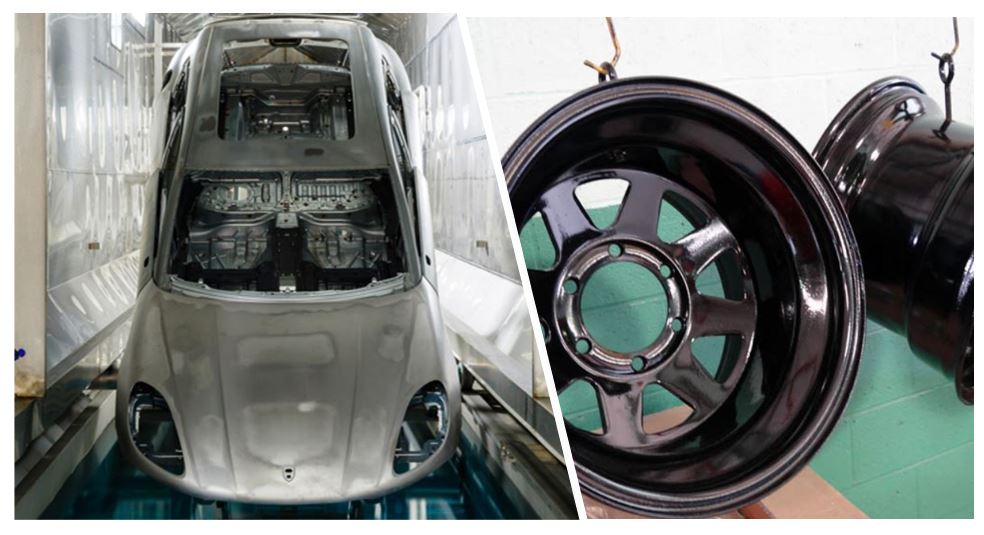
Powder coating involves spraying powder paint towards an electrostatically charged aluminum part. The paint particles are attached to the part’s surface by the electrostatic attraction. Upon curing, the solid particles melt and strongly adheres to the part surface.
Powder coating and e-coating have a lot of advantages in common and both are eco-friendly processes. However, powder coating is not as uniform as e-coating. And it is difficult to coat certain areas. So, the coating may lack consistency and uniformity when applied to complex parts.
It is often used as a secondary layer over an e-coated surface. Doing so can substantially increase the durability of aluminum parts. And you have access to more types of colors with powder coating.
E-coating vs Electroplating
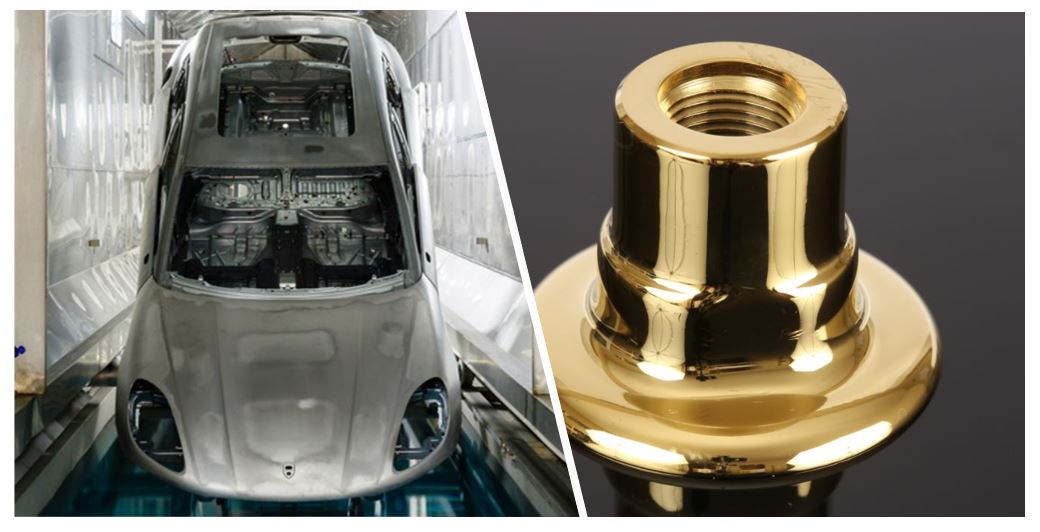
E-coating or Electrocoating is an electrodeposition process where a metal part is coated using organic compounds like paint, epoxy, etc. Electroplating is an electrodeposition process are using metallic compounds to coat the part. Unlike, e-coating, the parts don’t have to be metal in this case.
Electroplating is typically done with nickel, gold, zinc, silver, etc. elements. The coating will provide a metallic sheen to the parts and enhance their conductive properties. Electroplated metals usually offer better hardness, and wear resistance for aluminum parts.
E-Coating Aluminum vs Anodization Aluminum
Anodizing does not actually involve applying an extra layer of coating on your parts. It is an electrochemical process that increases the natural oxide layer of metal parts to improve its appearance, performance, and corrosion resistance.
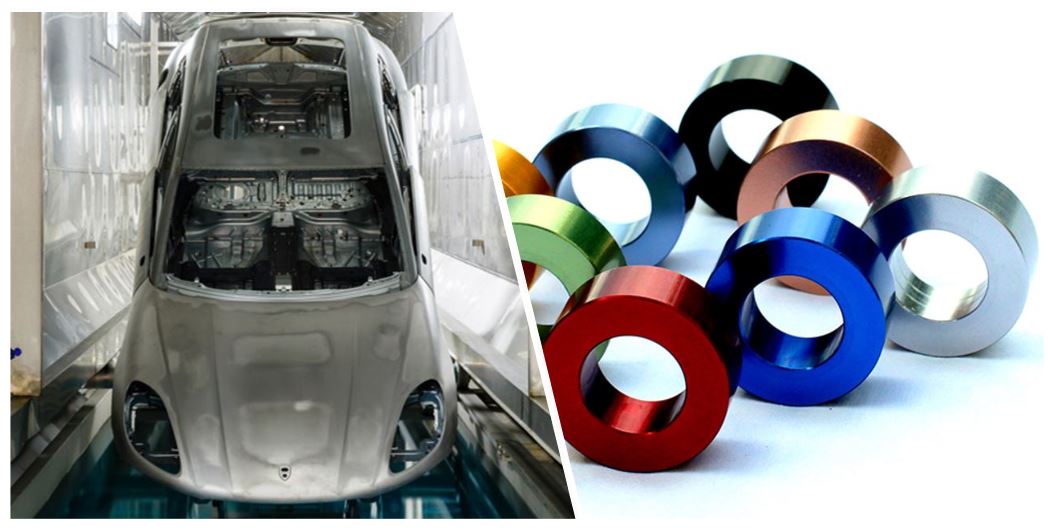
The appearance of an e-coated and anodized part of the same color may look similar. But their properties are entirely different. E-coating is applicable for almost any sort of metal. But Anodizing is mainly suitable to aluminum and few other metals.
Both of the processes can increase the corrosion and wear resistance of aluminum parts. The E-coated and anodized surface has excellent adhesion and suppliers often use them as a prime coat for other surface finishes.
We hope that this article was able to answer your queries regarding e-coating. If you are curious to know more about e-coating aluminum parts, you can contact Sunrise Metal for assistance.


